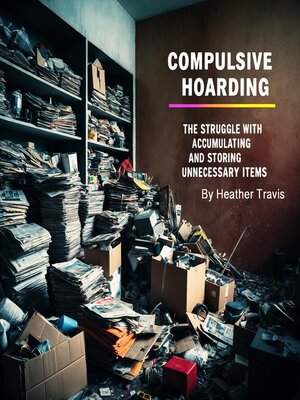Compulsive Hoarding
audiobook (Unabridged) ∣ The Struggle with Accumulating and Storing Unnecessary Items
By Heather Travis

Sign up to save your library
With an OverDrive account, you can save your favorite libraries for at-a-glance information about availability. Find out more about OverDrive accounts.
Find this title in Libby, the library reading app by OverDrive.



Search for a digital library with this title
Title found at these libraries:
| Library Name | Distance |
|---|---|
| Loading... |
This audiobook is narrated by a digital voice.
In homes across the world, behind carefully maintained facades and locked front doors, millions of people live trapped within walls of their own possessions, navigating narrow pathways through towers of newspapers, bags of clothing, collections that have long since lost their purpose, and items saved "just in case" that have transformed living spaces into storage warehouses where human habitation has become secondary to accumulation. Compulsive hoarding represents one of the most misunderstood and stigmatized mental health conditions, where the fundamental human relationship with material possessions becomes so disordered that objects intended to serve human needs end up controlling and destroying the very lives they were meant to enhance.
The phenomenon of hoarding exists on a spectrum from mild collecting behaviors that bring joy and organization to severe accumulation that renders homes uninhabitable and relationships impossible. What distinguishes pathological hoarding from normal collecting or even messy housekeeping is the profound distress and functional impairment that results when the accumulation of possessions begins to interfere with basic life activities like cooking, sleeping, bathing, or having social relationships. For those affected, possessions become simultaneously sources of comfort and anxiety, security and shame, identity and imprisonment.
The prevalence of hoarding disorder has become increasingly recognized, with research suggesting that approximately 2-6% of the population struggles with clinically significant hoarding behaviors, making it more common than many other well-known mental health conditions.







